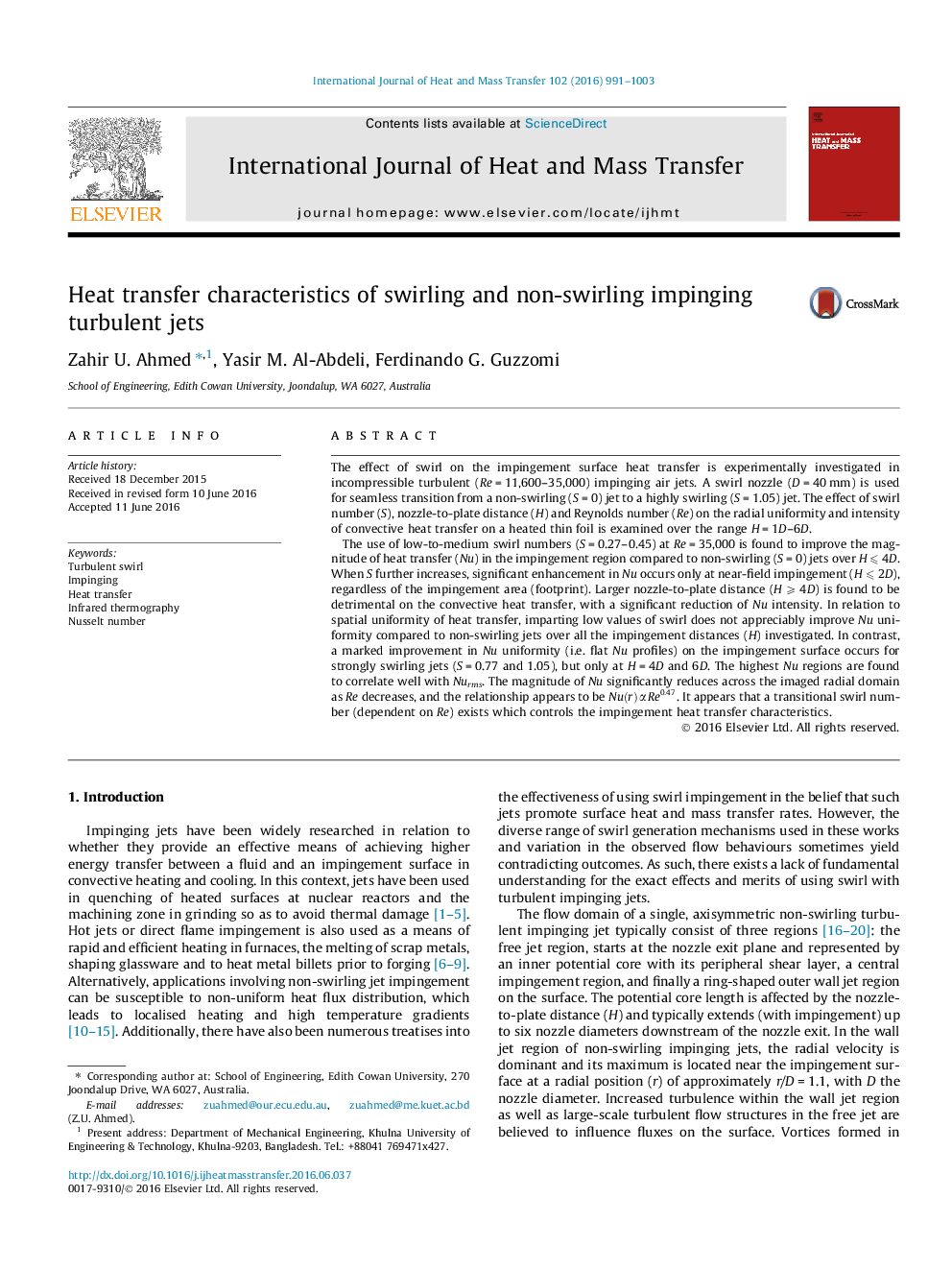| Article ID | Journal | Published Year | Pages | File Type |
|---|---|---|---|---|
| 7055346 | International Journal of Heat and Mass Transfer | 2016 | 13 Pages |
Abstract
The use of low-to-medium swirl numbers (S = 0.27-0.45) at Re = 35,000 is found to improve the magnitude of heat transfer (Nu) in the impingement region compared to non-swirling (S = 0) jets over H ⩽ 4D. When S further increases, significant enhancement in Nu occurs only at near-field impingement (H ⩽ 2D), regardless of the impingement area (footprint). Larger nozzle-to-plate distance (H ⩾ 4D) is found to be detrimental on the convective heat transfer, with a significant reduction of Nu intensity. In relation to spatial uniformity of heat transfer, imparting low values of swirl does not appreciably improve Nu uniformity compared to non-swirling jets over all the impingement distances (H) investigated. In contrast, a marked improvement in Nu uniformity (i.e. flat Nu profiles) on the impingement surface occurs for strongly swirling jets (S = 0.77 and 1.05), but only at H = 4D and 6D. The highest Nu regions are found to correlate well with Nurms. The magnitude of Nu significantly reduces across the imaged radial domain as Re decreases, and the relationship appears to be Nu(r)αRe0.47. It appears that a transitional swirl number (dependent on Re) exists which controls the impingement heat transfer characteristics.
Related Topics
Physical Sciences and Engineering
Chemical Engineering
Fluid Flow and Transfer Processes
Authors
Zahir U. Ahmed, Yasir M. Al-Abdeli, Ferdinando G. Guzzomi,
